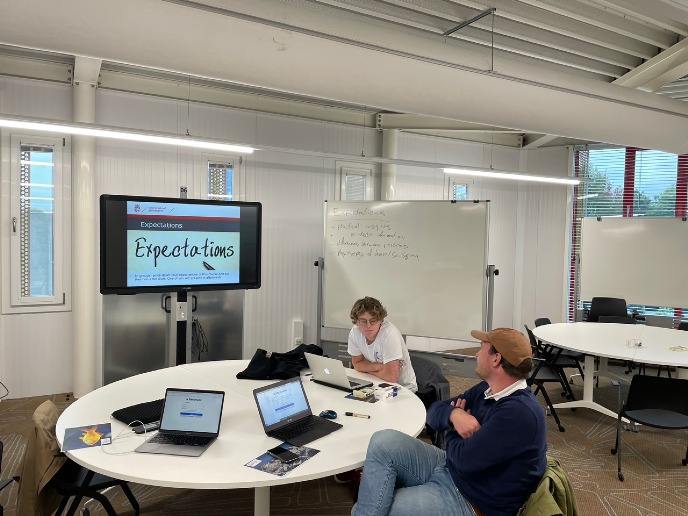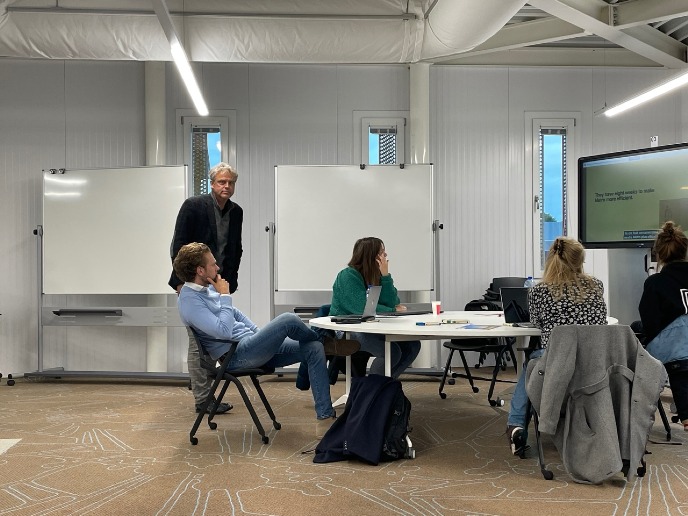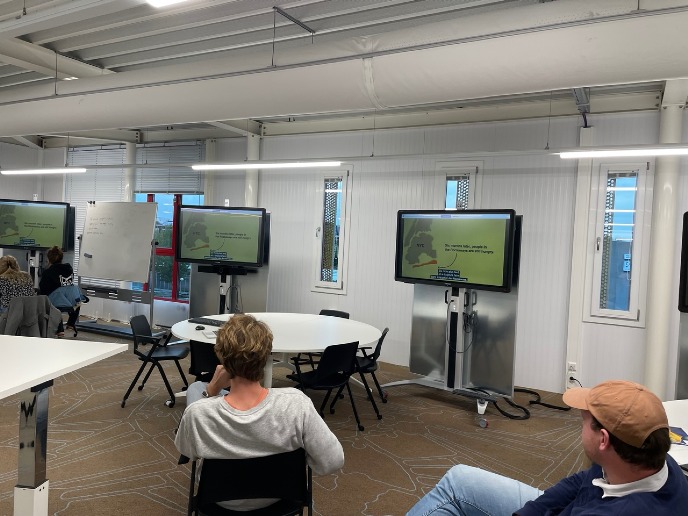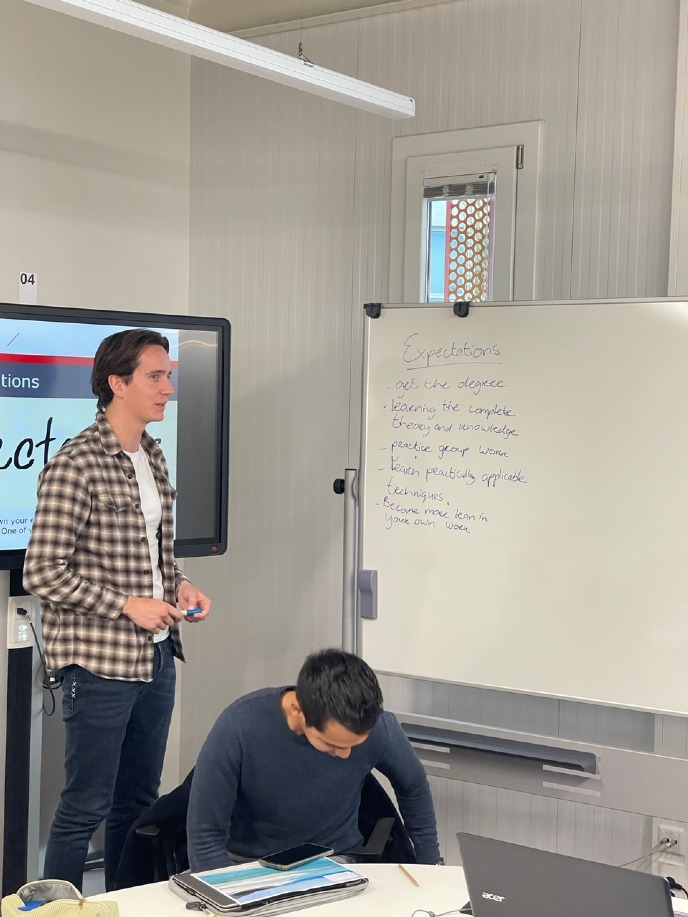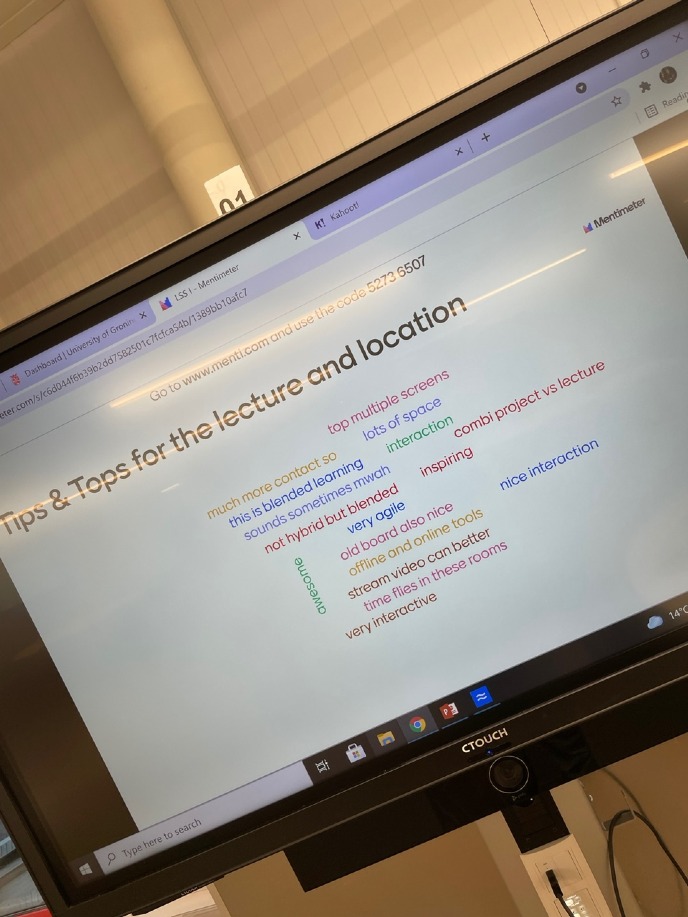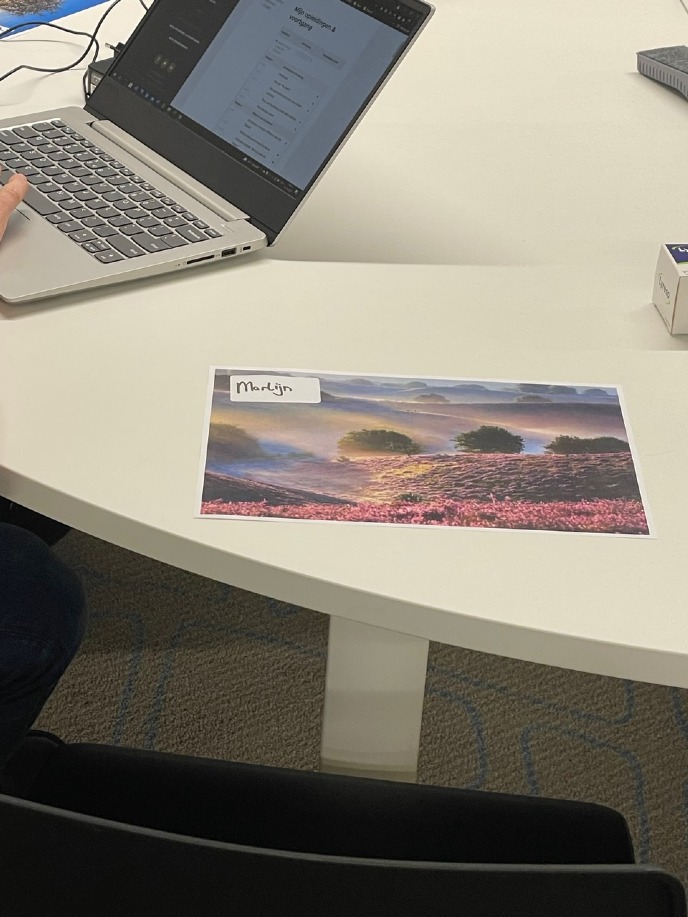Onderwijs van de toekomst

English text below
'Inspirerend en heel interactief!', 'De tijd vliegt voorbij in deze colleges', 'Veel meer contact tussen docent en medestudenten' en 'Geweldig'.
Studenten van de Rijksuniversiteit Groningen waren erg enthousiast na hun eerste cursus als onderdeel van de Lean Six Sigma Learning Community van de Faculteit Economie en Bedrijfskunde. Ook docent Bas Baalmans was zeer tevreden over de resultaten. 'De manier waarop de docent eenvoudig kan schakelen tussen groepswerk in kleinere teams, plenaire feedback en uitleg geven werkt heel goed. Deze actieve leerruimte biedt veel meer flexibiliteit dan in de meer traditionele collegezalen mogelijk is.'
Het vak werd gegeven in een van de zogenaamde Zernike Experimentele Onderwijsruimtes (ZEO). ZEO markeert de verdere uitvoering van het vierjarige project Tijdelijke Experimentele Onderwijsruimtes (TEO). Begonnen in de voormalige openbare bibliotheek (in het centrum van Groningen) als tijdelijke huisvesting voor leerruimtes, heeft TEO nu de mogelijkheid zich permanent te vestigen op de Zernike Campus. ZEO is een initiatief van de drie samenwerkende Zernike-faculteiten en vindt plaats op de Zernike Campus, waar bijna de helft van de studenten van de Rijksuniversiteit Groningen (RUG) colleges volgt.
De Active Learning Classrooms werken erg goed en studenten worden meer centraal gepositioneerd in de onderwijsactiviteiten binnen deze ruimtes. Docenten worden gestimuleerd in hun denkproces over lesgeven, wat resulteert in onderwijsstrategieën die meer studentgericht zijn: een belangrijk onderdeel op de agenda van het Strategisch Plan van de RUG. Ook docenten van verschillende faculteiten kunnen ervaring opdoen met blended teaching, omdat de ruimtes het mogelijk maken om snel te schakelen tussen centrale instructie en groepswerk in een online en op locatie context.
In het Duisenbergpaviljoen is een grote Tutorial ruimte en een Atelierruimte gecreëerd. 'Schakelen tussen offline en online en tussen decentraal groepswerk en centrale instructie is precies wat deze inspirerende ruimtes mogelijk maken', vertelt Baalmans. 'Ook het concept van de learning community is een perfect format om te combineren met ZEO. Studenten sluiten zich vrijwillig aan bij deze leergemeenschappen om kennis op te doen en hun cv te verbeteren. Ze krijgen wel een certificaat en in deze specifieke course de mogelijkheid om een green belt te behalen, maar krijgen geen studiepunten hiervoor.' Er is dus ook enige vrijheid om te experimenteren met inhoud, werkwijzen en leerplekken.
Er zijn 25 studenten in deze cursus, verdeeld over vijf groepen. De studenten volgen verschillende MSc- en BSc-opleidingen van verschillende faculteiten. De cursus begon met een korte 'elkaar leren kennen'-oefening, met wat ouderwetse uitgeprinte foto's, gevolgd door een toelichitng op de cursus en een eerste introductie in de Lean-theorie. Studenten en docent schakelden tussen de klassieke collegevorm en proactief teamwerk, waarbij studenten continue de kennis in oefeningen toepasten. Op deze manier werd het geheel erg praktijkgericht. Ondertussen maakt de groep gebruik van online tools zoals Perusall, Menti en Kahoot!, naast Google-apps en online mindmapping, en varieerde deze manier van werken met typische offline methodes zoals post-its, flip-overs en groepsdiscussies.
Na deze eerste cursus bij ZEO concludeert Baalmans: 'Kijkend naar de doelen die we met deze ruimtes nastreven, zijn mijn ervaringen tot nu toe zeer positief. Omdat ze absoluut meer studentgericht zijn en ook effectiever voor studenten. En voor de docenten zijn de ruimtes zeer geschikt om ervaringen met blended learning tools en didactiek op te doen. Schakelen tussen centraal en decentraal en offline versus online zijn inspirerend voor beide groepen, studenten en docenten!' Hij beveelt de lokalen aan al zijn collega's aan. 'Het zijn perfecte plekken om te experimenteren met blended learning. En met de didactische en technologische hulp van Education and Communication Services (ECS; FEB) en Educational Support and Innovation (ESI; CIT) bijvoorbeeld over het gebruik van de Airtame tool om naar alle schermen te streamen, zijn de ruimtes zeer gemakkelijk in gebruik.'
---------------------------
'Inspiring and very interactive!', 'Time flies in this kind of lecture', 'Much more contact with the lecturer and fellow students', and 'Awesome'. Students were very enthusiastic after their first course as part of the Lean Six Sigma learning community. Lecturer Bas Baalmans was also very satisfied with the results. 'The way the instructor can easily switch between group work in smaller teams, plenary feedback, and providing explanations works really well. The active learning space allows much more flexibility than what can be done in traditional lecture halls.'
The course unit was held at one of the so-called Zernike Experimental Learning Classrooms (in Dutch Zernike Experimentele Onderwijsruimtes, ZEO). ZEO mark the further implementation of the four-year Experimental Learning Classrooms (in Dutch Tijdelijk Experimentele Onderwijsruimtes, TEO) project. Started in the former public library (in the centre of Groningen) as temporary accommodation for learning spaces, TEO now has the opportunity to be permanently established at Zernike Campus. ZEO is an initiative of the three collaborating Zernike faculties and is hosted at Zernike Campus, where almost half of the students of the University of Groningen (UG) attend lectures.
The Active Learning Classrooms work very well and students are positioned more centrally in the teaching activities within these rooms. Lecturers are stimulated in their thinking process about teaching, resulting in teaching strategies that are more student-focused: an important part of the agenda of the UG’s Strategic Plan. Lecturers from different faculties are also able to gain experience with blended teaching, as the spaces make it possible to quickly switch between central instruction and group work in an online and on-location context.
'Switching between offline and online and between decentralized group work and central instruction is exactly what these inspiring rooms facilitate', explains Baalmans. 'The concept of the learning community is also a perfect format to combine with ZEO. Students voluntarily join these learning communities to gather knowledge and to improve their CVs. They do get a certificate and, in this specific LC, the possibility to earn a green belt, but are not awarded any ECTS credit points.' So, there is also some freedom to experiment with content, methods of working, and learning locations.
There are 25 students in this course, divided into five groups. The students are following various MSc and BSc degree programmes from different faculties. The course started with a brief 'get to know each other' exercise, with some old-school print-outs and pictures followed by a lecture about the course and a first introduction to the theory. Students and the lecturer switched between the classic lecture format and proactive teamwork, in which the students applied the knowledge in exercises. In this way, the class became very practice-driven. Meanwhile, the group used online tools such as Perusall, Menti, and Kahoot!, in addition to Google apps and online mind-mapping, and varied this way of working with typical offline methods such as post-its, flip-overs, and group discussion.
After this first course at ZEO, Baalmans concludes: 'Looking at the goals that we are aiming for with these spaces, my experience so far is very positive. Because they are absolutely more student-focused and also more effective for students. And for the lecturers, the rooms provide a good experience with blended learning tools and methods of didactics. Switching between central and decentralized and offline versus online practices are more inspiring for both worlds, students and staff!' He recommends the rooms to all of his colleagues. 'They are perfect places to experiment with blended learning and, with the didactic and technological help of and manuals by Education and Communication Services (ECS; FEB) and Educational Support and Innovation (ESI; CIT), for example on how to use the Airtame tool for streaming to all screens, are very easy to use.'
